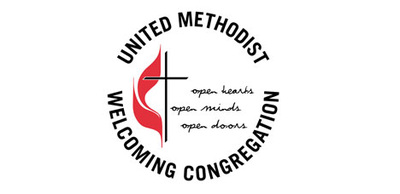According to literary scholar Holly Ordway, fairy tales appeal to us because they speak to some of our deep-seated longings. They tug at the yearnings of our heart. They are written with a simplicity that strips the story down to the essentials, and this makes them particularly vivid and familiar stories for us. The classic fairy tale has a hero or heroine who embarks on a long journey or adventure, and the hero is usually sketched pretty thinly so that we can place ourselves in his or her position. There’s a lot of fear and danger and terror in fairy tales – the quest is not easy; it is dangerous and full of risk. This brings us to another key feature of fairy tales – the helper who arrives to provide wisdom, guidance, or even magical help to the hero. In many tales, the helper is depicted with spiritual significance. If we look closely, we see that fairy tales are deeply moral stories. There may not be an explicitly religious message in them, but they encourage us to look realistically at the world, with all its goodness, evil, and hardship, and recognize our human frailty and our need for help and redemption. Fairy tales, not unlike the stories we find in Scripture, speak to us on a spiritual plane.
The fairy tale that I’m going to highlight today is one that wasn’t familiar to me before, but there’s so much about it that resonates with the Scripture we just heard from the Gospel of Luke about the two disciples who encounter the risen Christ on the road to Emmaus. The title of the tale is The Traveling Companion, and again, it was written by Hans Christian Andersen. So what I’d like for you to do is keep open in part of your mind the story of the two disciples walking to the village of Emmaus, who come upon Jesus walking with them but don’t recognize him. We’ll come back this Scripture. But now, let me tell you a little about The Traveling Companion. The tale begins with a young man named John – called Poor John – because he’s at the bedside of his father who is dying. It is a sad, heartbreaking scene. There is no hope of recovery, and it’s the middle of the night – the bedside lamp is even about the burn out – and the father speaks a final word to his beloved son, and then he dies. John weeps bitterly, for he has loved his father dearly and now he is all alone. He’s orphaned with no brothers or sisters, and he cries bitter tears all through the night. But what we learn very quickly about John is that he has immense goodness and hope within him. As his father is being buried, the sun shines down upon him, he hears the beauty of the birds singing, and he thinks about his father in heaven, and this brings him joy, and we see him smiling even through his tears. The very next day, he sets out all alone into the big, wide world with everything he owns in a knapsack and the little money he has in his pocket. The first night out he sleeps on a haystack under the moon. The next day is Sunday and he hears church bells and finds a church, delighted to recite the psalms and sing the hymns. In the cemetery outside the church he sees overgrown graves that remind him of his father, so he stops to weed and tend the graves. Outside the church is an old beggar, who John gives a few shillings of silver, and this makes John feel happier and freer than ever before. He goes on his way and in the next village encounters a storm with rain and lightning, and he finds another church for shelter (Just so you’re keeping track, this makes three churches John has already visited – this is someone close to God). Upon going inside he sees a coffin in the middle of the room with a dead man inside. And then there’s a disturbing scene – two angry, bad men by the coffin are talking about throwing the man’s body outside. John approaches them and learns these men are angry because the dead man owed them money. Without skipping a beat John offers to give them all the money he has if they will leave the dead man in peace. They agree, taking his money and laughing at what they perceive as his gullibility. The very next day, as he continues on his journey, John encounters a man who is also going out into the big wide world, and he asks if he can join John, and John says yes. So the two journey together, encountering many adventures together, and all along the way John is captivated by the beauty of God’s creation, which consistently moves him to tears. John is able to see everything through eyes of hope and love. Finally, John and his traveling companion come upon a large city with a splendid marble palace, and they encounter the most significant adventure of them all – an adventure that includes danger, suspense, evil – you know, all those elements that we expect in a good fairy tale. Now, I don’t want to give away too many spoilers for those of you are planning to read the story and haven’t done so yet. And given what we already know about fairy tales, I bet you can guess how the story ends. Yes, the main characters will end up living happily ever. I hope it’s also not too much of a spoiler to tell you that the traveling companion ends up saving John’s life. At the very end of the story, the companion tells John he has to leave and continue on his travels, although John begs him to stay. And John finally sees his companion’s true identity – he is the dead man in the coffin for whom John sacrificed all he had in order to assure his peace. In his resurrected state, the traveling companion has restored the order of all things. As soon as John recognizes him, he vanishes. The companion in this story, as I’m sure you’ve figured out by now, is a Christ figure. He is a resurrected figure who travels with John in an unrecognized state, guiding and helping him on his journey – saving his very life. It is also worth noting that John and the traveling companion are headed in the same direction. In the Gospel story of the walk to Emmaus, Jesus comes up to the two disciples who have left Jerusalem and they do not recognize him. And though Jesus is walking along beside them, Jesus wasn’t heading in that direction because he wanted to go to Emmaus, too. He’s actually there to intervene in their journey. You see, the disciples are so distraught and discouraged about Jesus’ death and all that has happened in Jerusalem that they’ve given up. They are escaping to Emmaus. They’ve had enough; they can’t cope. In heading to Emmaus, they are walking away from Jerusalem, from the church, from their faith. And Jesus meets up with them on their journey. Father Ronald Rolheiser, in his beautiful, powerful interpretation of the walk to Emmaus, says that if we could pick only one scripture to sum up the faith situation of most Christians today, it would be this passage. So many of us, he says, are in that space between Good Friday and Easter Sunday. We are on the journey, but we are discouraged, and we can’t see Jesus walking beside us. As he states, “a sense of the resurrection has not yet illumined our imaginations that we can recognize the God who is walking beside us” (Sacred Fire 99). The disciples can’t grasp the cross. They don’t understand how God can exist in the midst of the humiliation and suffering that they have witnessed. The disciples can’t get their minds around this, and they tell Jesus as much. And Jesus, well, he listens. But then he intervenes in an attempt to restructure their imaginations. How foolish you are, he tells them. And he continues to tell them, yet again, who he is, and what his purpose is. As Rolheiser explains, the cross is the deep secret to all our understanding, but it isn’t a hidden secret. Jesus never tries to hide the secret – it’s simply a truth that can be hard for us to grasp. And this truth, in his words, is “that in giving love away in total self sacrifice, at the cost of humiliation, brokenness, and death, we ourselves come to what’s deepest and fullest in life . . . . God’s vulnerability, which the cross invites us into, is a power for community with God and with each other” (Passion and the Cross loc. 558). How many of us want a God who makes himself known with bold, decisive action? Who stomps out evil and suffering, who kills off all the bad guys? But that’s not who God is and how God works. God does not threaten or coerce or use guilt or force to manipulate the order of things. God is not an avenger, nor is God even a rescuer. God never overpowers. God is “pure patience,” willing to endure all things. God’s power is different than the world’s power. It is power born out of vulnerability, mercy, and forgiveness. It is the only power that can absorb the ugliness and sin and violence of the world – not giving it back in kind – but instead absorbing it and transforming it into something new, and pure, and good. So we can understand why the disciples couldn’t recognize the risen Savior. A crucified Christ simply couldn’t fit their understanding. Their imagination, their vocabulary of faith, needed expanding. How many of you have had a time when your faith was challenged? Have you ever been tempted to walk away from faith because your sense of who God was, or your understanding of how faith works, was shaken? This is a common occurrence for us, if we’re honest. Maybe for some of us it has been the illness and suffering of someone close to us that has challenged our faith. For others, perhaps it was a betrayal or rejection from someone in the church, or from the church itself. In our journeys of faith, we all will have times when our faith will need to be resurrected. But, just as in the walk to Emmaus, Christ will come beside us, with a new face, and we won’t recognize him. But as Father Rolheiser assures, and as scripture attests, in time Jesus will restructure our imaginations and our ways of seeing, and we will recognize and know God in a deeper and fuller way. Jesus will not fail to meet us on our journey. It doesn’t matter which direction we are headed. We can trust in his presence and in his guidance and in his vulnerable and redeeming goodness. Perhaps, like the disciples, we have witnessed death and injustice and are hopeless and discouraged. Or, maybe like John in the fairy tale, we have witnessed death and the trials of life without becoming bitter, and we are able to see the entire world through humble, loving, trusting eyes. One of my favorite things about the fairy tale The Traveling Companion is the sweet, trusting spirit of the hero, John. But even John doesn’t recognize his divine companion! Whatever our orientation or the state of our faith, the good news is that the saving work has been done. Easter has come. It’s not up to us. Whether we recognize Jesus or not, he will walk with us and restructure our imaginations to share in his vulnerability, his mercy, and his grace. Rolheiser, Ronald. Sacred Fire: A Vision for a Deeper Human and Christian Maturity. New York: Imagine, 2014. Rolheiser, Ronald. The Passion and the Cross. Cincinatti: Franciscan Media, 2015. Kindle Ebook.
0 Comments
Leave a Reply. |
Sermon videos are currently available on our homepage.
Pastor Tracey
On a lifelong journey of seeking to live out God's call on my life and to reflect His grace. 10 Minute SermonsCategories
All
Sermon Archives
September 2022
|
Trinity United Methodist Church
Growing in love and service through relationships with God and community
|
Connect with Us:
|
|
 RSS Feed
RSS Feed





